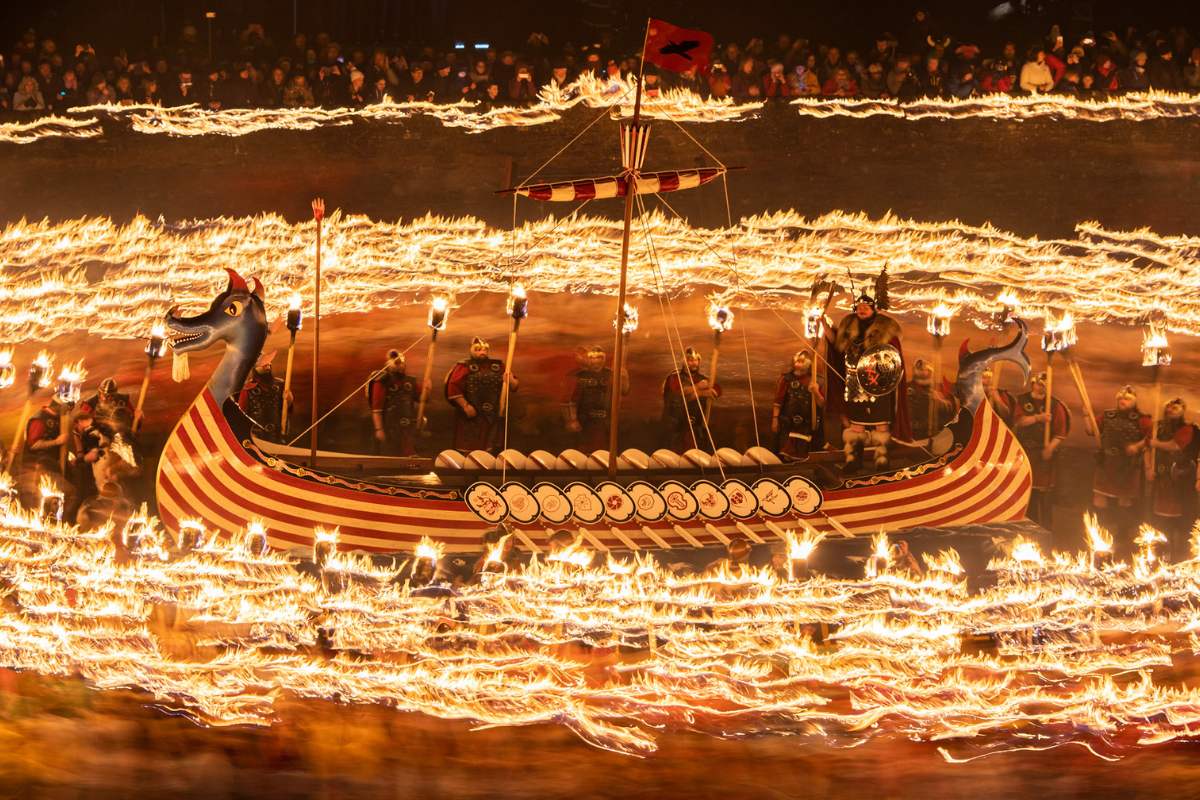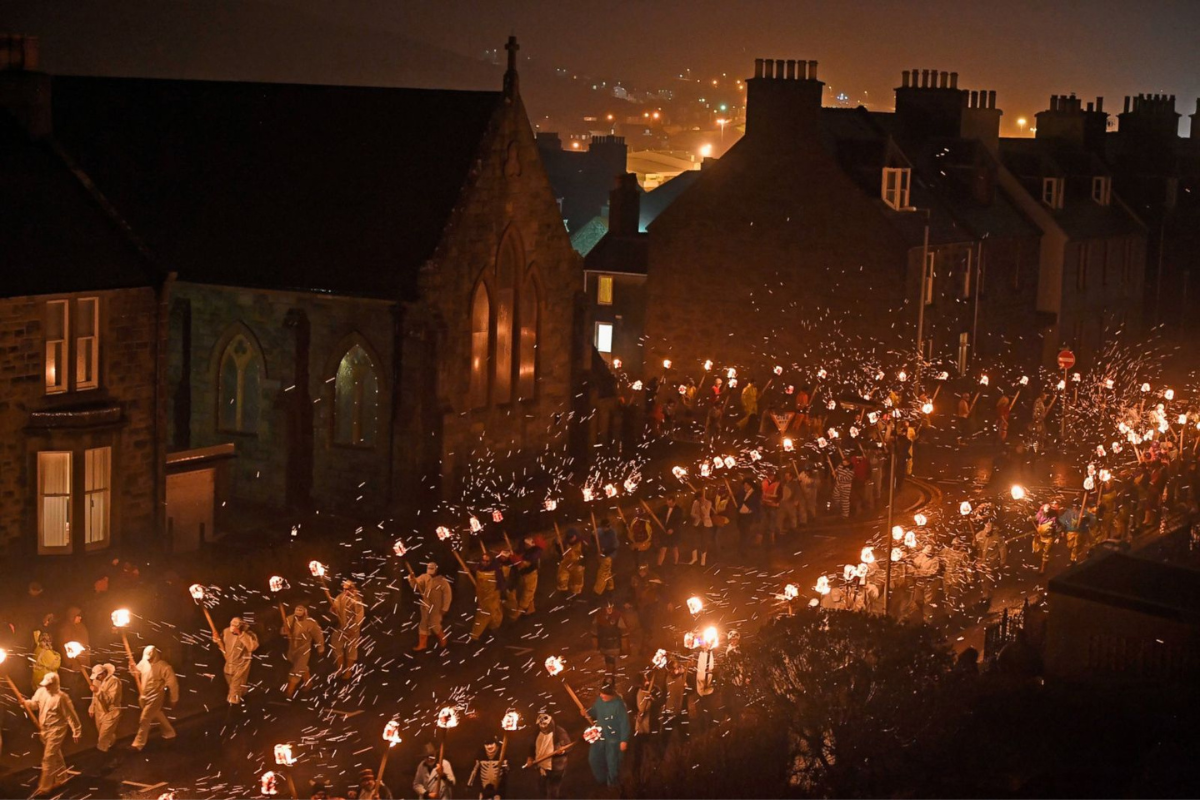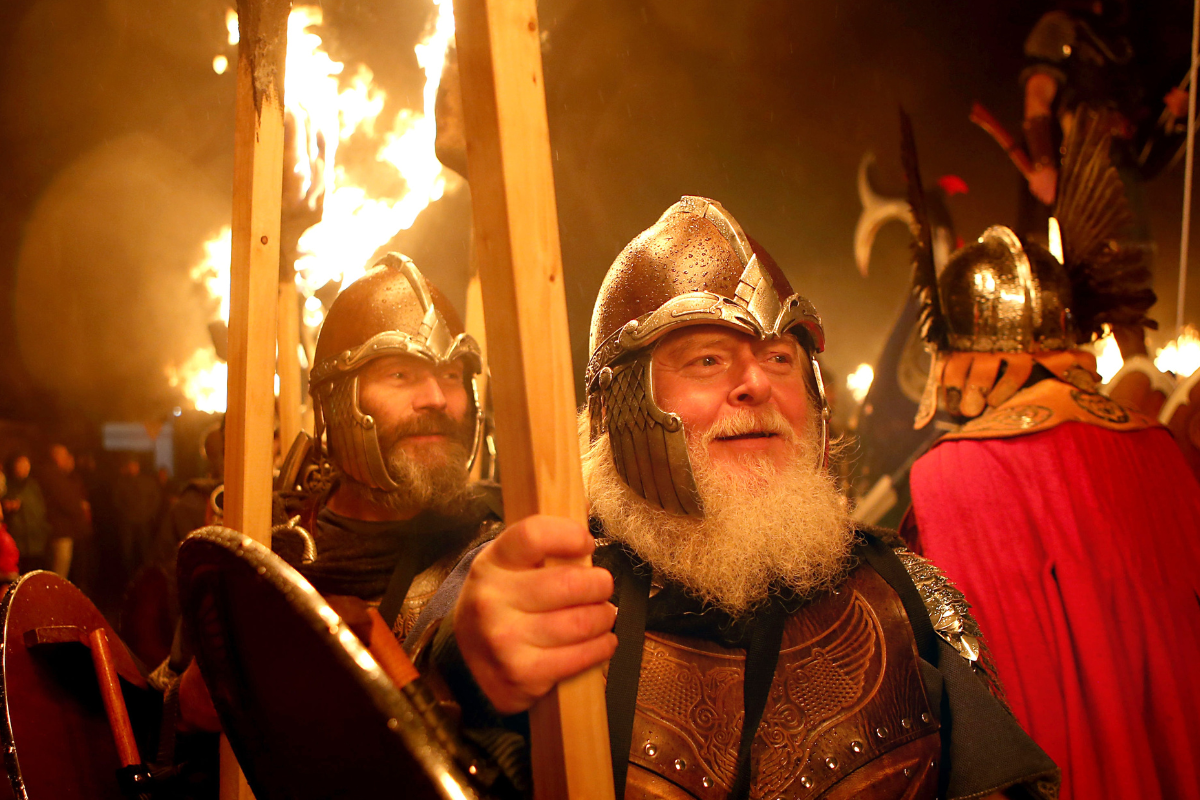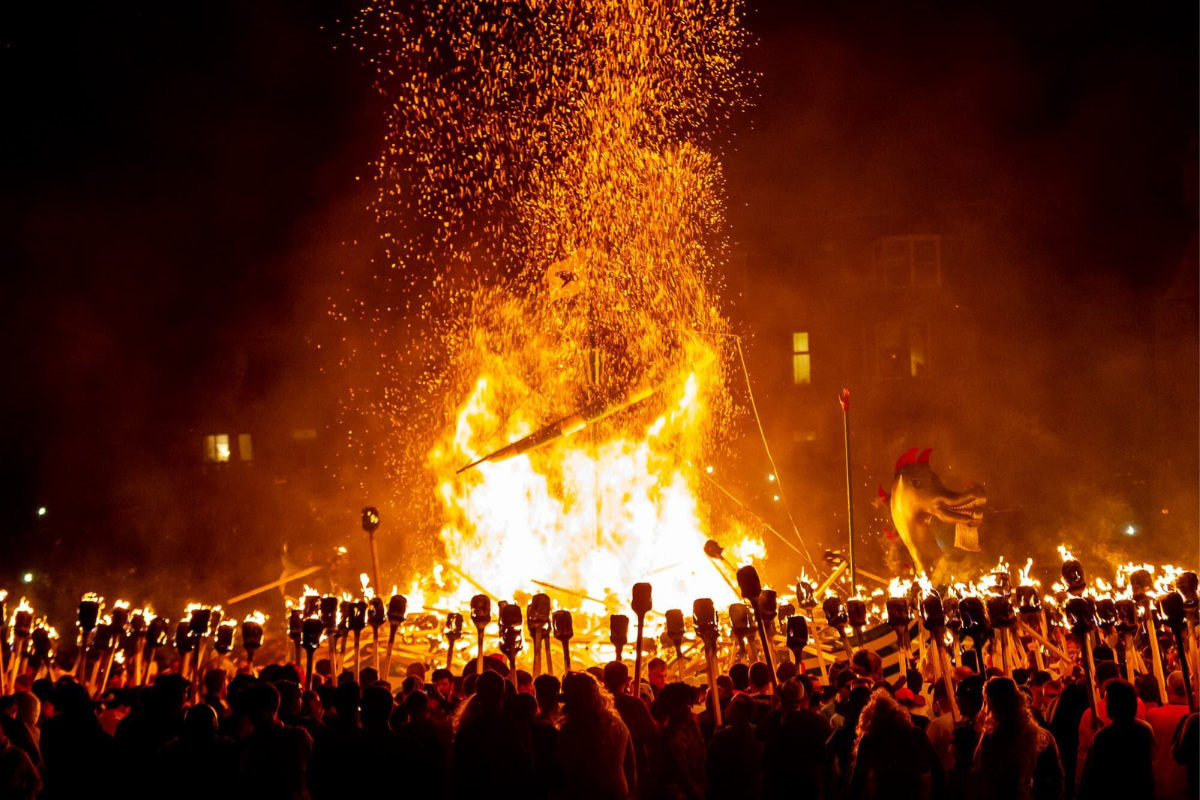Nestled amidst the windswept islands of Shetland, Scotland, lies a unique and vibrant tradition: Up Helly Aa. This fire festival held annually from January to March, marks the end of the Yule season with a captivating display of community spirit, cultural heritage, and fiery revelry.

Photo: Dave Gifford
Nestled amongst the windswept islands of Shetland, Scotland, lies a tradition steeped in fire, fellowship, and fierce community spirit: Up Helly Aa. This unique fire festival held annually from January to March, marks the culmination of the Yule season and transforms sleepy towns into vibrant canvases of light and revelry. While the largest and most well-known event occurs in the capital, Lerwick, a network of smaller Up Helly Aas flourishes across the archipelago, each pulsating with its own unique character.
The name itself, Up Helly Aa, translates to “Up Holy Day All” in the local dialect, hinting at the festival’s historical connection to religious holidays like Christmas and Epiphany. While its origins remain shrouded in some mystery, Up Helly Aa as we know it today emerged in the 19th century, evolving from earlier, more spontaneous celebrations. Today, it stands as a powerful symbol of Shetland’s resilience, cultural identity, and enduring connection to its Viking heritage.
The heart of Up Helly Aa lies in its elaborate processions. Hundreds of participants, known as “guizers,” transform themselves into a captivating spectacle. Dressed in elaborate costumes, often depicting Viking warriors or mythical figures, they march through the streets, their faces hidden behind painted wooden masks called “faces.” The “Jarl Squad,” led by a figure representing a Viking chieftain, takes center stage, carrying flaming torches and setting the night ablaze with their fiery presence.

Photo: ABC News
The culmination of the festival arrives with the dramatic burning of a replica Viking galley. Constructed meticulously throughout the year, the galley becomes a canvas for artistic expression, adorned with symbolic imagery and intricate details. As the flames engulf the vessel, casting an orange glow across the sky, onlookers erupt in cheers, marking the symbolic end of the Yule season and the cleansing power of fire.
Beyond the flames: A celebration of community
While the fiery spectacle is undoubtedly captivating, Up Helly Aa is much more than just a visual feast. It serves as a powerful symbol of community cohesion and cultural pride for the people of Shetland. Months of preparation involve countless volunteers from all walks of life, fostering a sense of shared responsibility and collective achievement. The festival also serves as a platform to showcase and celebrate Shetland’s rich cultural heritage, keeping alive traditions passed down through generations.
While the festival’s current form is well-organized and structured, its origins are quite different. Up Helly Aa in the 19th century was often characterized by spontaneous gatherings and boisterous celebrations, sometimes even bordering on chaos. However, in the late 19th century, a desire to maintain order and ensure safety led to the formation of the Up Helly Aa Committee, which continues to regulate and organize the festival to this day.
Up Helly Aa is constantly evolving, adapting to the changing times while staying true to its core values. In recent years, the festival has seen an increasing number of women participating, both as guizers and in leadership roles. This inclusivity reflects the changing demographics of Shetland and ensures the festival’s continued relevance for future generations.

Photo: BT
For those fortunate enough to witness Up Helly Aa firsthand, it is an unforgettable experience. The combination of vibrant costumes, rhythmic music, blazing flames, and the palpable sense of community creates a truly unique and captivating spectacle. However, it is important to remember that Up Helly Aa is primarily a local celebration, and visitors are encouraged to be respectful of local customs and traditions.
Up Helly Aa, with its fiery displays and deep-rooted traditions, transcends the realm of a simple festival. It is a testament to the enduring spirit of the Shetland people, their connection to their heritage, and their unwavering commitment to their community. The flickering flames of Up Helly Aa illuminate not just the night sky but also the resilience, passion, and cultural richness that lies at the heart of this unique island community.
Up Helly Aa: A tourism magnet with complexities
Up Helly Aa has undeniably played a significant role in shaping Shetland’s tourism industry. The festival’s unique spectacle and historical significance attract visitors from all corners of the globe, generating a substantial economic boost for the island community. Hotels, restaurants, and tourist attractions experience a surge in activity during the festival period, contributing to local businesses and livelihoods.

Photo: Finding The Universe
However, the relationship between Up Helly Aa and tourism is complex. While the festival brings economic benefits, it also presents certain challenges. The influx of visitors can strain local resources, particularly accommodation and transportation, leading to potential price hikes. Additionally, ensuring a balance between catering to tourists and preserving the festival’s authenticity is crucial. The exclusive nature of certain aspects of the celebration, such as the guizer squads, can create a sense of exclusion for visitors.
Moving forward, it is important to find a sustainable approach to tourism that allows visitors to experience the magic of Up Helly Aa while respecting the local culture and traditions. This might involve implementing responsible tourism practices, such as encouraging visitors to explore Shetland beyond the festival and supporting local businesses throughout the year. By striking a balance between economic development and cultural preservation, Up Helly Aa can continue to be a source of pride for the Shetland people while attracting respectful and responsible visitors who contribute to the island’s future.

